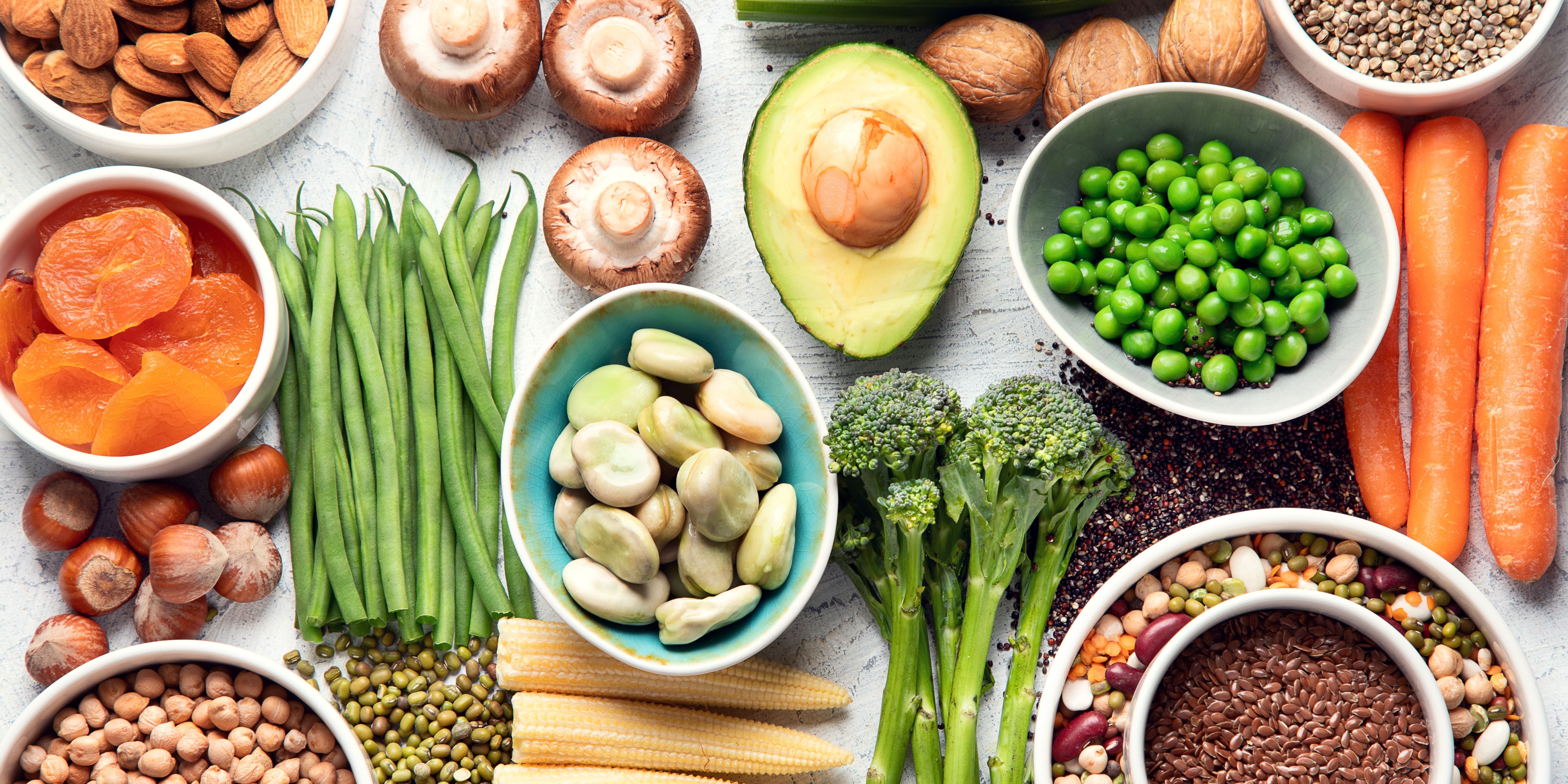Written by Alisa - 7 Minutes reading time
Clean solutions to plant protein challenges

Nutrition, taste, texture and clean label ingredient lists all represent areas for potential improvement in the plant-based protein category, according to several consumer surveys. Potential solutions may be coming from a combination of plant protein ingredients, fermentation and an aquatic plant called lemna.
Research done by FMI – The Food Industry Association and 84.51º, the market research arm of Kroger Co., shows consumers think there is room for improvement related to taste, texture and on shortening lengthy ingredient panels.
Another challenge is plant-based proteins have difficulty in achieving a balanced amino acid profile comparable to meat and dairy. The best protein digestibility corrected amino acid score (PDCAAS) is 1.0. Eggs, whey protein and milk all score a perfect 1.0. Alone, pea protein and rice protein fall short of 1.0, but when combined correctly, their amino acid profiles complement each other, making 1.0 possible.
“By combining them in the right ratio we can create a complete protein, and our fermentation process improves this balance further by improving the digestibility of the protein so that 99.9% is easily digestible,” said Caroline Schwarzman, director, commercialisation and growth strategy for MycoTechnology, Inc., Aurora, Colo. “The result is a protein powder with a PDCAAS of 1.0 for ages 3-plus.”
MycoTechnology uses mycelia (the root system of mushrooms) to create ingredients through fermentation.
“Our facility and proprietary process use submerged fermentation (or liquid-state fermentation) to grow mushroom mycelia in a liquid medium, in comparison to solid-state fermentation where mycelia are grown on a solid substrate like grains or oats,” said Lisa Wetstone, vice president, marketing, innovation and strategy for MycoTechnology. “In contrast, precision fermentation uses a microorganism — often yeast — as a small ‘factory’ to produce a specific molecule of interest.”
For sustainability benefits, drought-tolerant peas are low-water intensity and a nitrogen-fixing plant.
“Both pea protein and rice protein have lower GHG (greenhouse gas) emissions per gram of protein on average than soy, almonds or cashews,” Ms. Schwarzman said. “Even more importantly, by creating a more functional protein with a neutral sensory profile, we enable formulators to create more nutrient-dense products that have broader consumer appeal and can help attract and retain customers who would otherwise consume animal products.”
FermentIQ PTP, which contains pea protein and rice protein, works well in nutritional beverages and meat analogs.
“It can be added in high inclusion levels without detracting from the intended flavor profile, and it develops pleasant, umami notes when cooked,” Ms. Schwarzman said. “Its high emulsion capacity makes it well suited for cold cuts and binding systems in burgers, nuggets and patties.”
FermentIQ PEA, which contains pea protein only, is specifically intended for dairy alternative applications.
“The fermentation process lightens the color of the protein, removing yellow tones common to pea protein so it more closely mimics the look of dairy,” Ms. Schwarzman said. “Its high solubility, emulsion capacity and heat capacity, as well as its reduced green, grassy, pea notes, make it ideal from both a flavor and functionality standpoint. It creates a smooth, creamy texture in milks, yogurts and spreads, and it doesn’t interfere with starch systems, so cheeses can melt, shred and stretch as intended.”
Ingredion, Inc., Westchester, Ill., also combined pea protein and rice protein when exhibiting at SupplySide West in Las Vegas in October. A ready-to-mix beverage contained 20 grams of protein, 5 grams of fiber and no sugar due to the inclusion of erythritol. A truffle bar with pea and rice protein contained 8 grams of protein, 5 grams of fiber and 7 grams of sugar. PureCircle stevia and Astraea allulose were used to reduce sugar content. Research from Ingredion shows 70% of US consumers are making a conscious effort to get enough protein in their diet and/or consuming specific foods and beverages to get more protein in their diet.
FrieslandCampina Ingredients, Amersfoort, The Netherlands, this year launched its Plantaris range of plant-based protein ingredients and sampled pea protein and fava protein beverage concepts at SupplySide West. Plantaris ingredients also may be used to create bars with over 15 grams of protein.
“Both our Plantaris pea isolate 85A and Plantaris fava isolate 90A are excellent options for brands looking to craft delicious, high-quality plant-based protein bars,” said Vicky Davies, global senior marketing director, active and medical nutrition at FrieslandCampina Ingredients. “The choice between these two (pea protein or fava protein) depends on a brand’s preference as both ingredients provide a pleasant tasting bar with great palatability.
“Some brands, for example, may choose to opt for pea protein as consumer demand for this ingredient is growing rapidly. The market for pea protein is expected to grow by a CAGR (compound annual growth rate) of 12% by 2028. On the other hand, opting for fava protein presents a unique opportunity for differentiation.”
Formulating with plant proteins means dealing with issues related to taste and texture, including beany off-notes from pea protein.
“This is the very reason we decided to develop our Plantaris protein range, to help brands overcome these challenges and say goodbye to beany off-notes forever,” Ms. Davies said. “Our Plantaris ingredients are light cream-colored protein powders that meet high consumer expectations for taste and texture. Moreover, both ingredients are extracted using a gentle, chemical-free manufacturing process and are specially processed to ensure a smooth, soft texture.”
Clean texture options
Methylcellulose, derived chemically through a process of etherification, works well as a binding agent in plant-based meat alternatives, but some consumers perceive it negatively because it is highly processed, according to ICL Food Specialties, St. Louis.
ICL Food Specialties and San Diego-based Plantible Foods, which produces a Rubi Protein RuBisCO ingredient, this year launched a binding system for plant-based meat and seafood alternatives that may replace methylcellulose. RuBisCO (Ribulose-1, 5-bisphosphate carboxylase/oxygenase) is a protein found in the lemna leaf. Lemna, also known as duckweed or water lentil, provides functional food protein.
ICL Food Specialties and Plantible Foods partnered to introduce a Rovitaris binding system powered by Rubi Protein, a functional protein system that has been shown to replace chemically processed binders. Because of its gelling, foaming, emulsifying and other functional properties, Rubi Protein allows for the replacement of food additives, egg white and other animal proteins to improve the taste, nutritional profile and sustainable production of baked foods, beverages, dairy, and plant-based meat and seafood alternatives.
The system will be available commercially in the United States in 2024.
“This highly functional, nutritious protein, derived from sustainably grown lemna, enhances the taste, texture, and nutrition of virtually any food application,” said Tony Martens, co-founder of Plantible Foods.
Rado Sporka, vice president of the food specialties commercial business for ICL, added, “Plant-based protein formulators have been searching for a clean label, highly functional replacement for chemically derived binders, such as methylcellulose, for years. In partnership with Plantible Foods, we were able to leverage our deep knowledge of proteins to create a market-leading binding solution that will allow plant-based food manufacturers to meet the needs of even the most demanding consumers.”
Beneo, which has a US office in Parsippany, NJ, turned to pea protein for taste and texture benefits in creating plant-based Meatless beef bites and Meatless minced meat, which the company planned to sample at Fi Europe, held Nov. 28-30 in Frankfurt, Germany. Available in frozen forms, the beef bites and minced meat have high heat stability and water-holding capacity, according to Beneo. They retain their juiciness and succulence when baked or fried. Potential applications include stir fries and stews.
Beneo acquired Meatless BV, Goes, The Netherlands, in May 2022. The company supplies textured ingredients derived from raw materials such as rice, fava beans, wheat, peas, lupin and quinoa.
“Due to the high consumer interest, we made the decision to expand our range of cost-effective, plant-based solutions to also include beef alternatives that can easily be integrated into existing production processes,” said Niels E. Hower, a member of Beneo’s executive board. “The alternatives market is largely focused on replacing chicken or processed applications like hamburgers and meatballs. So, the addition of meatless beef bites and minced meat products offers manufacturers an even broader spectrum of choice.”
Interested in the dynamic Food Industry? Let our experts guide your career. Explore how we can help you today! Discover the possibilities here.
Also published on Foodbusinessnews.net
Want to stay informed about current Life Science and recruitment news on a regular base? Then register here for free.
